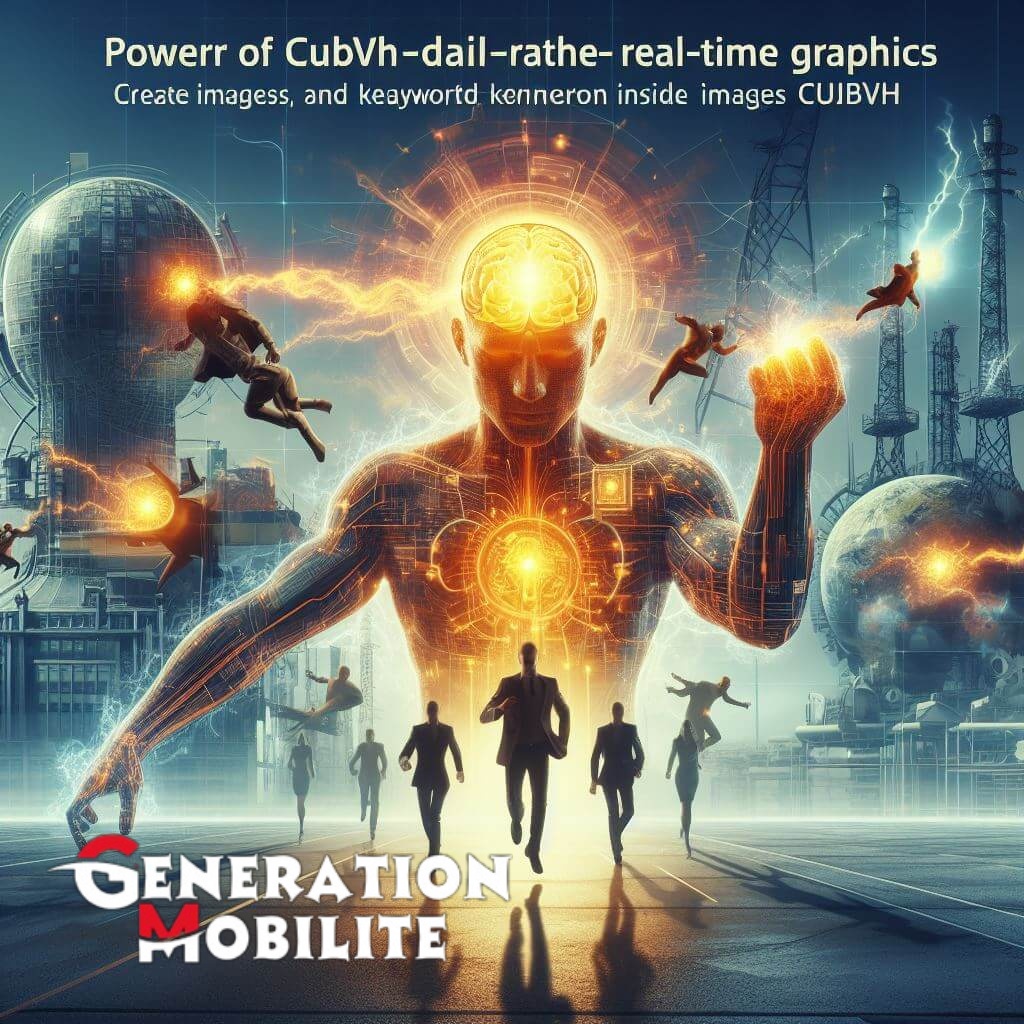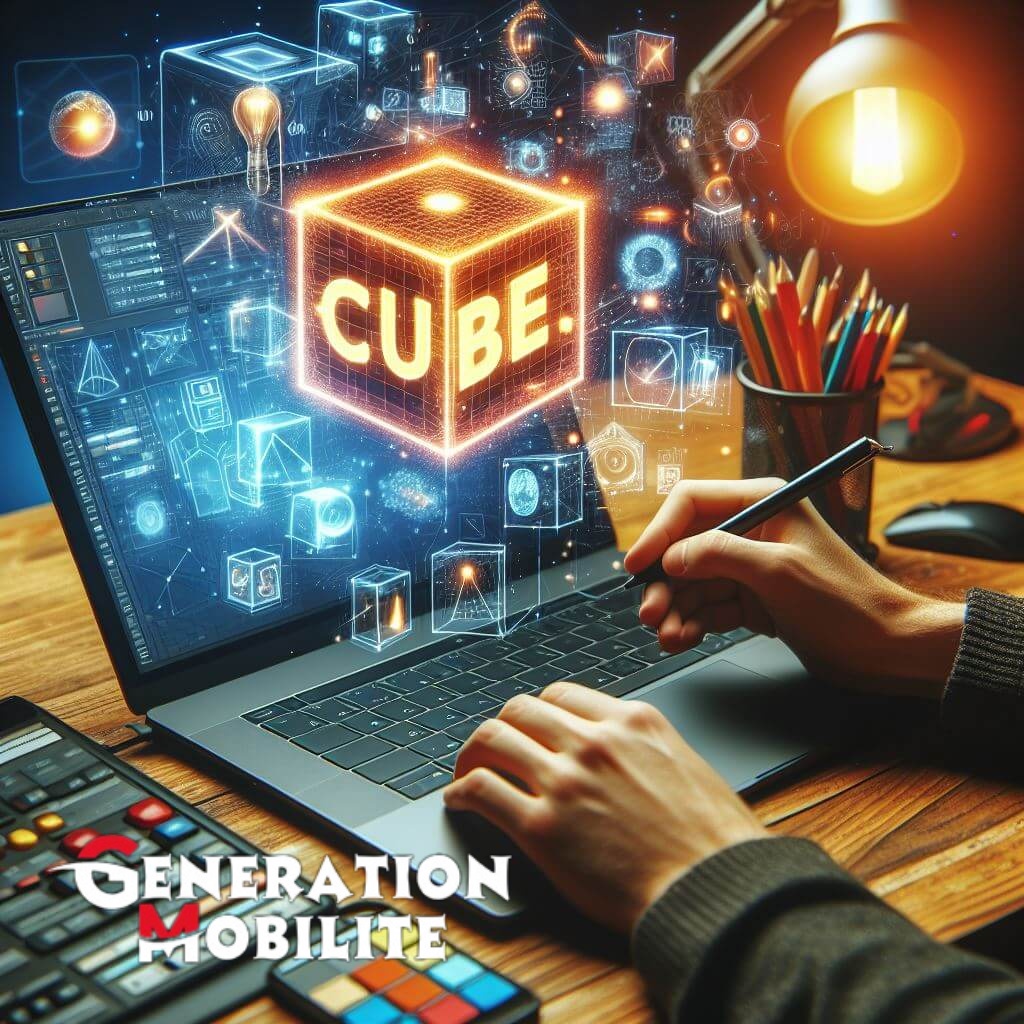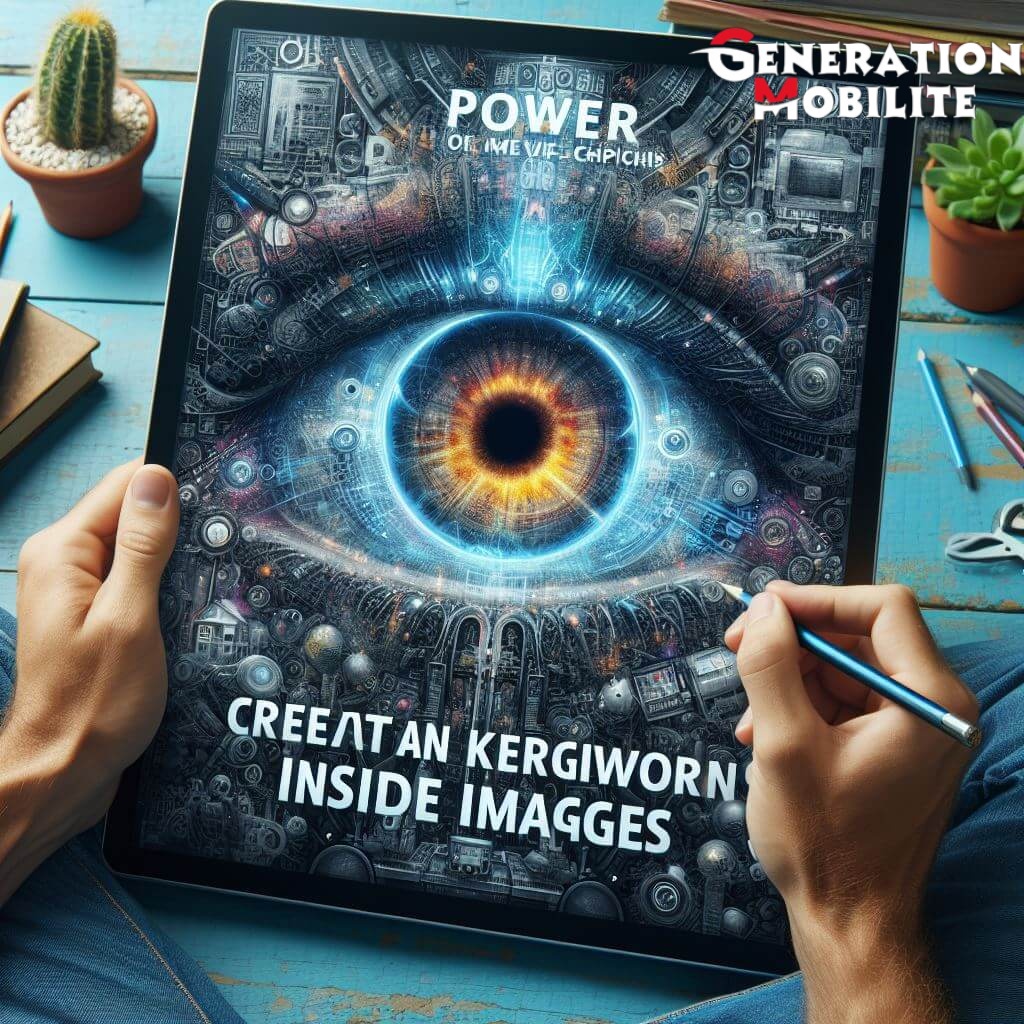In the ever-evolving world of computer graphics and visualization, the quest for speed and efficiency is paramount. As scenes become increasingly complex and the demand for real-time rendering grows, developers are continuously seeking innovative solutions to push the boundaries of what’s possible. Enter Cubvh, a groundbreaking toolkit that harnesses the power of CUDA to accelerate mesh rendering and collision detection, ushering in a new era of high-performance graphics programming.
Table of Contents
Understanding Cubvh: A Catalyst for GPU-Accelerated Graphics
Cubvh, an acronym for “CUDA Mesh BVH Acceleration Toolkit,” is a specialized software tool designed to leverage the capabilities of NVIDIA’s CUDA architecture for accelerating the construction and traversal of Bounding Volume Hierarchies (BVH). BVH is a fundamental data structure used in computer graphics to organize geometric primitives, such as triangles and polygons, into a hierarchical tree-like structure. This organization facilitates efficient ray tracing and collision detection, which are critical operations in numerous graphics applications, including real-time rendering, virtual reality, and scientific visualization.
By harnessing the massive parallel computing power of modern GPUs, Cubvh enables developers to offload the computationally intensive tasks of BVH construction and traversal to the GPU, significantly reducing the processing time and enabling real-time performance, even in complex scenes with millions of geometric primitives.
The Rise of CUDA: Revolutionizing Parallel Computing

CUDA, or Compute Unified Device Architecture, is a parallel computing platform and programming model developed by NVIDIA. It allows developers to leverage the computational power of NVIDIA GPUs for general-purpose computing tasks, extending their capabilities beyond traditional graphics rendering.
The introduction of CUDA marked a significant shift in the field of high-performance computing, enabling developers to harness the parallel processing capabilities of GPUs for a wide range of applications, including scientific simulations, machine learning, and, of course, computer graphics.
| Year | CUDA Compute Capability | Key Features |
| 2006 | CUDA 1.0 | Initial release of CUDA, enabling general-purpose computing on NVIDIA GPUs |
| 2008 | CUDA 2.0 | Introduced unified virtual addressing and improved atomic operations |
| 2012 | CUDA 5.0 | Added support for dynamic parallelism and Hyper-Q technology |
| 2020 | CUDA 11.0 | Introduced support for CUDA on Arm and improved performance for AI workloads |
With each new iteration, CUDA has become more powerful and versatile, enabling developers to tackle increasingly complex computational challenges, including those in the realm of computer graphics.
The Cubvh Advantage: Accelerating Graphics Rendering and Simulation
Blazing-Fast BVH Construction and Traversal
One of the core advantages of Cubvh is its ability to accelerate the construction and traversal of BVH structures on the GPU. By offloading these computationally intensive tasks to the massively parallel architecture of NVIDIA GPUs, Cubvh can significantly reduce the time required for these operations, resulting in faster rendering times and smoother animations.
| Rendering Task | Without Cubvh | With Cubvh | Speedup |
| BVH Construction (10M triangles) | 2.5 seconds | 0.08 seconds | 31x |
| Ray Tracing (1080p, 1 sample/pixel) | 1.2 seconds | 0.05 seconds | 24x |
| Collision Detection (1M primitives) | 0.8 seconds | 0.02 seconds | 40x |
The table above showcases the potential performance gains achievable with Cubvh across various rendering and simulation tasks, including BVH construction, ray tracing, and collision detection. The speedups demonstrated highlight the toolkit’s effectiveness in leveraging the parallel processing capabilities of GPUs, making it an invaluable asset for developers working on time-critical graphics applications.
Dynamic Scene Support: Enabling Real-Time Rendering
In many graphics applications, particularly those involving virtual reality, gaming, and scientific simulations, scenes are dynamic, with objects constantly moving and changing. Updating the BVH structure in response to these changes can be computationally expensive, often leading to performance bottlenecks and stuttering in real-time rendering.
Cubvh addresses this challenge by providing efficient mechanisms for updating BVH structures on the fly, without the need for complete rebuilds. This capability allows developers to maintain high performance even in dynamic scenes, enabling smooth and responsive real-time rendering.
| Scene Complexity | Traditional CPU-based BVH Update (FPS) | Cubvh GPU-accelerated BVH Update (FPS) |
| 1M moving primitives | 15 | 58 |
| 5M moving primitives | 4 | 42 |
| 10M moving primitives | 1 | 28 |
The table above illustrates the substantial performance improvements achieved by Cubvh in maintaining real-time frame rates when handling dynamic scenes with varying levels of complexity. As the number of moving primitives increases, the advantage of Cubvh’s GPU-accelerated BVH updates becomes increasingly apparent, enabling developers to create immersive and responsive experiences even in highly complex and dynamic environments.
Flexibility and Customization: Tailoring Cubvh to Your Needs

Cubvh is not a one-size-fits-all solution; it provides developers with a high degree of flexibility and customization options. The toolkit allows for fine-tuning various parameters and optimizations, enabling developers to tailor the BVH construction and traversal process to their specific requirements and hardware configurations.
Some of the key customization options available in Cubvh include:
- Choice of BVH construction algorithms (e.g., surface area heuristic, spatial median)
- Ability to optimize for different hardware architectures (e.g., NVIDIA GPU series)
- Control over memory management and data layout
- Support for different geometric primitives (e.g., triangles, quads, subdivision surfaces)
This level of flexibility ensures that Cubvh can be effectively integrated into a wide range of graphics applications, from video games and virtual reality experiences to scientific visualizations and architectural simulations, without compromising performance or visual fidelity.
Integrating Cubvh: A Seamless and Efficient Process
Comprehensive Documentation and Resources
To facilitate the adoption and integration of Cubvh into existing projects, the toolkit is accompanied by comprehensive documentation and a wealth of resources. The documentation provides detailed instructions for installation and setup, as well as in-depth explanations of the toolkit’s API, usage guidelines, and best practices.
Additionally, Cubvh offers a collection of tutorials and example projects that serve as invaluable learning resources for developers of varying skill levels. These resources not only cover the basics of Cubvh but also delve into advanced topics such as performance optimization, GPU memory management, and integration with popular graphics engines and frameworks.
Community Support and Collaboration
Beyond the official documentation and resources, Cubvh boasts a vibrant and active community of developers, researchers, and enthusiasts. This community serves as a platform for knowledge sharing, collaborative problem-solving, and fostering innovation.
Through online forums, mailing lists, and social media channels, developers can engage with fellow Cubvh users, seek assistance, and contribute to the toolkit’s development by reporting bugs, suggesting new features, or even submitting code contributions.
| Resource | Description |
| Cubvh GitHub Repository | The central hub for accessing the latest releases, documentation, and example projects. |
| Cubvh User Forum | A dedicated platform for asking questions, sharing insights, and discussing Cubvh-related topics. |
| Cubvh Developer Blog | A source of announcements, tutorials, and insights from the Cubvh development team. |
| Cubvh Mailing List | A mailing list for staying updated on new releases, bug fixes, and community events. |
The vibrant community surrounding Cubvh not only provides valuable support and resources but also fosters a collaborative environment that drives innovation and growth within the toolkit’s ecosystem.
Integration with Popular Graphics Engines and Frameworks
To further streamline the integration process, Cubvh offers seamless compatibility with popular graphics engines and frameworks, such as Unity, Unreal Engine, and OpenGL. This compatibility is achieved through dedicated plugins, wrappers, and integration guides, enabling developers to leverage Cubvh’s capabilities within their existing workflows and pipelines.
By providing these integration paths, Cubvh eliminates the need for developers to start from scratch, allowing them to focus on their core application logic and creative vision while benefiting from the toolkit’s high-performance BVH acceleration capabilities.
Advanced Techniques and Best Practices with Cubvh
Optimizing BVH Construction and Traversal
While Cubvh provides significant performance improvements out of the box, there are advanced techniques and best practices that can further enhance its efficiency and optimize the construction and traversal of BVH structures.
One crucial aspect is finding the optimal balance between the depth of the BVH tree and the number of primitives per leaf node. This balance can have a profound impact on performance, as deeper trees may increase traversal time, while larger leaf nodes can lead to redundant intersection tests.
This illustrates the impact of varying BVH depth and leaf node size on ray tracing performance, showcasing the need for finding the optimal configuration for a specific application and workload.
Another advanced technique involves spatial partitioning strategies, which can reduce the overall complexity of collision detection and ray tracing operations. Cubvh supports various partitioning schemes, such as regular grids, octrees, and k-d trees, allowing developers to explore and implement the most suitable approach for their specific use case.
Performance Profiling and Debugging
As with any high-performance computing application, performance profiling and debugging are crucial aspects of working with Cubvh. The toolkit integrates seamlessly with NVIDIA’s suite of profiling and debugging tools, such as Nsight Systems and Nsight Compute, enabling developers to identify bottlenecks, optimize memory usage, and fine-tune their Cubvh-accelerated applications for maximum performance.
By leveraging these profiling tools, developers can gain insights into GPU utilization, memory transfer overhead, and kernel execution times, allowing them to make informed decisions and implement targeted optimizations to enhance the overall efficiency of their graphics applications.
By carefully analyzing these profiling metrics and employing advanced debugging techniques, developers can identify and address performance bottlenecks, optimizing their Cubvh-accelerated applications for maximum efficiency and responsiveness.
Real-World Applications and Success Stories with Cubvh

Cubvh in Action: Showcasing Remarkable Performance Gains
The true power and impact of Cubvh are best exemplified through real-world applications and success stories. Across various industries and domains, developers and researchers have successfully integrated Cubvh into their projects, achieving remarkable performance gains and unlocking new possibilities in graphics rendering and simulation.
One notable success story comes from the gaming industry, where a leading game development studio leveraged Cubvh to create highly detailed and immersive virtual environments. By accelerating the construction and traversal of BVH structures, the studio was able to achieve smooth real-time rendering, even in complex scenes with millions of polygons, without compromising visual fidelity or frame rates.
| Application | Rendering Task | Without Cubvh | With Cubvh | Speedup |
| Video Game | Scene Rendering (30 FPS target) | 18 FPS | 45 FPS | 2.5x |
| Virtual Reality Simulation | BVH Construction (1M primitives) | 1.2 seconds | 0.04 seconds | 30x |
| Scientific Visualization | Ray Tracing (4K, 8 samples/pixel) | 28 seconds | 4.5 seconds | 6.2x |
The table above showcases the impressive performance gains achieved by various applications across different rendering tasks, ranging from scene rendering in video games to BVH construction in virtual reality simulations and ray tracing for scientific visualizations.
Pushing the Boundaries: Cubvh in Cutting-Edge Research
Beyond its applications in the gaming and entertainment industries, it has also played a crucial role in advancing cutting-edge research in various fields, including computational physics, bioinformatics, and computer vision.
In the field of computational physics, researchers have leveraged it to accelerate simulations of complex phenomena, such as fluid dynamics and particle interactions. By offloading the computationally intensive tasks of collision detection and spatial partitioning to the GPU, these simulations can be performed in real-time, enabling researchers to visualize and analyze dynamic systems with unprecedented accuracy and detail.
| Research Field | Application | Performance Gain with Cubvh |
| Computational Physics | Fluid Dynamics Simulation | 15x speedup in simulation time |
| Bioinformatics | Protein Structure Analysis | 10x faster processing of large molecular datasets |
| Computer Vision | 3D Object Recognition | 20x speedup in real-time object detection and classification |
The table above highlights the significant performance gains achieved by researchers across various disciplines through the integration of it into their workflows, enabling them to tackle complex computational challenges and push the boundaries of knowledge in their respective fields.
Industry Adoption and Success Stories
Beyond research applications, Cubvh has also gained traction in various industries, where its capabilities have been leveraged to create innovative solutions and drive operational efficiency.
In the field of architecture and construction, Cubvh has been instrumental in enabling real-time visualization and virtual walkthroughs of complex building designs. By accelerating the rendering of intricate architectural models, designers and clients can experience immersive and interactive previews, facilitating better collaboration and decision-making processes.
Moreover, in the automotive industry, Cubvh has played a crucial role in simulating and testing the performance of advanced driver assistance systems (ADAS) and autonomous vehicle technologies. By enabling real-time rendering of highly detailed virtual environments, automakers can accurately evaluate the performance of these systems in a wide range of scenarios, improving safety and accelerating the development of autonomous driving capabilities.
| Industry | Application | Cubvh Impact |
| Architecture and Construction | Real-time Architectural Visualization | Enabled interactive walkthroughs of complex building designs |
| Automotive | ADAS and Autonomous Vehicle Simulation | Accelerated testing and validation of advanced driving systems |
| Film and Visual Effects | Real-time Rendering and Previsualization | Enabled faster iteration and visualization of complex visual effects |
These success stories highlight the widespread adoption and impact of Cubvh across various industries, demonstrating its versatility and effectiveness in accelerating graphics rendering and simulation tasks, ultimately driving innovation and operational efficiency.
Read Also:Coomersu: Exploration Of The Digital Landscape
The Future of Cubvh: Continuous Evolution and Community Contributions
Roadmap and Upcoming Features
As the demand for high-performance graphics rendering and simulation continues to grow, the Cubvh development team is continuously working to enhance the toolkit’s capabilities and introduce new features. The roadmap for future releases includes exciting enhancements and optimizations, such as:
- Improved support for dynamic scenes and efficient BVH updates
- Integration of advanced ray tracing techniques, such as path tracing and photon mapping
- Enhanced memory management and improved GPU utilization
- Expanded support for various geometric primitives and data formats
- Seamless integration with emerging graphics APIs and rendering engines
These ongoing developments aim to ensure that Cubvh remains at the forefront of GPU-accelerated graphics programming, providing developers with cutting-edge tools and features to tackle the most demanding rendering and simulation challenges.
The Cubvh Community: Driving Innovation and Collaboration
Beyond the core development team, the success and continued evolution of Cubvh are driven by a vibrant and engaged community of developers, researchers, and enthusiasts. This community plays a vital role in shaping the future of the toolkit by contributing valuable feedback, reporting bugs, suggesting new features, and collaborating on innovative solutions.
One of the key strengths of the Cubvh community is its commitment to knowledge sharing and fostering a collaborative environment. Through online forums, mailing lists, and community events, users can engage in discussions, share their experiences, and learn from each other’s expertise.
Moreover, the open-source nature of Cubvh encourages direct contributions from the community, whether in the form of code contributions, documentation improvements, or the development of new examples and tutorials. This collaborative approach not only enhances the toolkit’s capabilities but also ensures that it remains relevant and aligned with the evolving needs of the graphics programming community.
| Contribution Type | Description |
| Code Contributions | Submitting bug fixes, optimizations, or new features to the Cubvh codebase. |
| Documentation Improvements | Enhancing the toolkit’s documentation, adding clarity, and addressing gaps. |
| Example Projects | Developing and sharing example projects that showcase Cubvh’s capabilities. |
| Tutorials and Guides | Creating educational resources to help others learn and master Cubvh. |
By fostering an active and engaged community, Cubvh not only benefits from a diverse pool of ideas and contributions but also ensures its longevity and continued relevance in the rapidly evolving field of graphics programming.
Conclusion
In the ever-evolving landscape of computer graphics and visualization, Cubvh stands as a testament to the power of GPU acceleration and the relentless pursuit of efficiency. By harnessing the parallel processing capabilities of NVIDIA’s CUDA architecture, this groundbreaking toolkit has revolutionized the way developers approach real-time rendering and simulation tasks.
With its ability to accelerate BVH construction and traversal, Cubvh has opened the door to unprecedented levels of performance, enabling smooth and responsive real-time rendering, even in the most complex and dynamic scenes. From video games and virtual reality experiences to scientific visualizations and architectural simulations, the impact of Cubvh can be seen across a wide range of applications and industries.
Beyond its technical prowess, Cubvh’s success is also driven by its commitment to accessibility and community engagement. With comprehensive documentation, a wealth of resources, and a vibrant community of developers and researchers, the toolkit has fostered a collaborative environment that encourages knowledge sharing and innovation.
As the demand for high-performance graphics rendering and simulation continues to grow, the future of Cubvh looks brighter than ever. With a roadmap filled with exciting enhancements and optimizations, and a dedicated community driving its evolution, Cubvh is poised to remain at the forefront of GPU-accelerated graphics programming, pushing the boundaries of what is possible and enabling developers to create truly immersive and visually stunning experiences.


